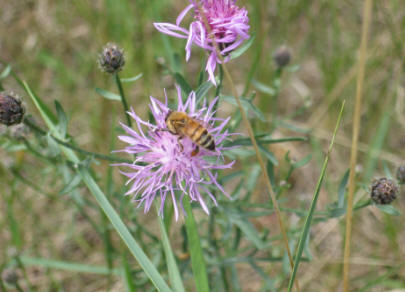Apis mellifera

Habitat
Where does this organism live?
Honey bees natural habitat encompasses the entire continent of Africa, Asia,
Europe including southern Scandinavia, and the
The European races include:
Apis
mellifera ligustica (Spin.) – originated in Italy.
Apis mellifera mellifera
L. – which are the German dark bees. They originated in northern Europe
and west-central Russia.
Apis mellifera carnica
(Pollman)- which are the Carniolan Bees, who originated in the southern Alps.
The African races include:
Apis mellifera intermissa v.
(Buttel-Reepen) which are the Tellian bees, who are found north of the
Sahara, from Libya to Morocco.
Apis mellifera lamarckii
(Cockwell) are the Egyptian bees. They can be found around north
east Africa, in
Apis mellifera scutellata
(Lepeletier) are found along the east coast of Africa. They have now
established in North and South America. Their common name is “Africanized bees”
or “Killer bees.” Both names belong to this subspecies.
Apis mellifera adansonii
(Latreille) are the west African bees.
Apis mellifera capensis
(Escholtz) are the Cape bees, only found at the tip of South Africa.
(Winston 1987)
North and South American races:
Honey bees are not native to North or South America, but typically bee keepers
in the United States use Apis mellifera ligustica (The Italian bees)
because they have desirable characteristics for beekeeping.
What is its ecological niche?
The honey bees have a unique lifestyle for a couple of reasons. For one,
they use nectar and honey; unlike their cousins the wasps, who feed on other
invertebrates. (Gould, 1988) Honey bees are also colonial, and it is this
adaption that allows them to survive through the winter, also unlike their
cousins the wasps and bumblebees. When spring comes, the
honey bees come back in full force and are able to easily outcompete other
pollinators for a few crucial weeks. It is these weeks when
the hive will get a head start on preparing for the following winter.
Other organisms, specifically flowering plants rely on honey bees to
spread their pollen. Though a lot of it is brought back to the hive, flowering
plants produce excess in hopes that some will pollinate other flowers of the
same species. “Without honey bees to pollinate them, most flowering
species would perish.” (Gould, 1988)